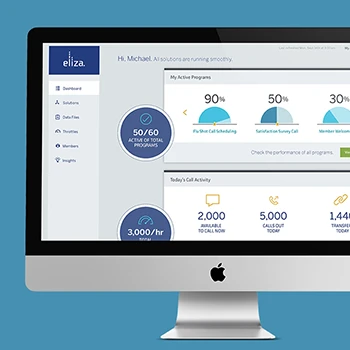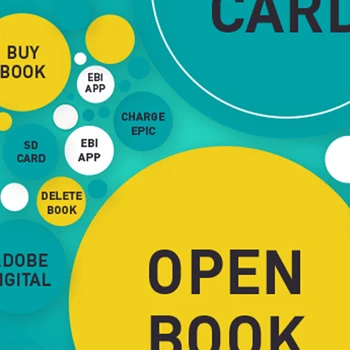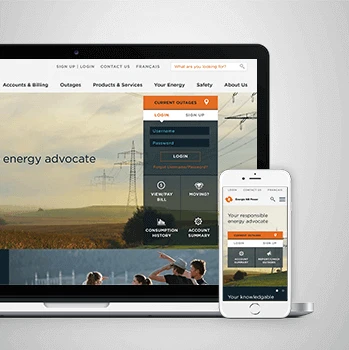What exactly is UX team enhancement and how does it differ from other UX services?
UX team enhancement is a comprehensive approach to elevating your organization's UX capabilities, maturity, and culture rather than just delivering specific projects. Using our Experience Thinking framework, we work to improve your team's strategic thinking across brand, content, product, and service experiences while building sustainable internal capabilities that create lasting competitive advantage.
Tip: Assess your current UX maturity level across strategy, culture, process, and outcomes before determining what enhancement approach will provide maximum value.
How do you assess our current UX maturity level and organizational readiness?
We evaluate your organization across multiple dimensions: UX leadership and planning, team structure and culture, systematic use of research and design methods, and measurement of UX outcomes. Our assessment examines whether you're in early stage, ramping up, or approaching maturity phases to determine the most effective enhancement strategies for your current context.
Tip: Include stakeholders from business, engineering, and design in the maturity assessment to get a complete picture of organizational UX readiness and gaps.
What organizational benefits can we expect from UX team enhancement?
Enhancement typically delivers reduced development rework, faster time-to-market, improved user satisfaction scores, better cross-functional collaboration, and stronger business alignment. Research shows that organizations with higher UX maturity experience 25% higher revenue growth and up to 50% reduction in development rework compared to lower-maturity organizations.
Tip: Define specific business metrics you want to impact through team enhancement and establish baseline measurements before beginning the program.
How does Experience Thinking methodology enhance our team's strategic capabilities?
Experience Thinking elevates teams beyond tactical execution to strategic thinking that connects brand, content, product, and service experiences into cohesive user journeys. This holistic approach helps teams understand how their work contributes to end-to-end experience lifecycles, enabling more strategic decision-making and better business impact measurement.
Tip: Map your current UX activities against all four Experience Thinking quadrants to identify strategic gaps where your team could increase business influence.
What role does organizational culture play in successful UX team enhancement?
Culture is fundamental to sustained UX maturity growth. We help organizations develop experience-oriented cultures where user-centered thinking becomes embedded in decision-making processes across all functions. This cultural transformation ensures enhancement efforts create lasting change rather than temporary improvements that fade over time.
Tip: Identify UX champions in non-design functions who can help spread user-centered thinking throughout your organization during the enhancement process.
How do you help teams balance current project demands with capability building?
We integrate enhancement activities into your existing project workflows rather than treating capability building as separate overhead. This approach allows teams to learn advanced methods while delivering immediate project value, creating sustainable skill development that doesn't compromise current deliverables or timelines.
Tip: Schedule enhancement activities during natural project transition points or lighter workload periods to maximize learning without impacting critical deliverables.
What foresight design capabilities do you help teams develop?
Foresight design involves anticipating future user needs, market changes, and technology evolution to create adaptive solutions. We help teams develop trend analysis skills, scenario planning capabilities, and strategic thinking that considers how current design decisions will perform as conditions change over time.
Tip: Include regular horizon-scanning activities in your team's workflow to build organizational capacity for anticipating and adapting to future challenges.
What specific UX capabilities and skills do you help teams develop?
We develop advanced research techniques, strategic design thinking, stakeholder management, business alignment skills, Experience Thinking methodology application, design system development, and measurement frameworks. Skills development is customized based on your team's current capabilities and organizational maturity goals.
Tip: Conduct skills gap analysis with your team members to identify individual development priorities alongside organizational capability needs.
How do you customize enhancement programs for different team structures?
Based on Experience Thinking organizational models, we adapt enhancement approaches for centralized, decentralized, and matrix team structures. Each model has different collaboration patterns, communication needs, and professional development requirements that influence how capability building programs are designed and delivered.
Tip: Evaluate whether your current team structure supports your UX maturity goals or if organizational changes should be part of the enhancement program.
What learning methodologies do you use for sustainable skill development?
We combine hands-on project work, mentoring relationships, collaborative workshops, peer learning sessions, and structured methodology training. This multi-modal approach ensures knowledge transfer occurs through practical application rather than just theoretical understanding, creating lasting capability improvements.
Tip: Establish peer mentoring relationships within your team to reinforce learning and create ongoing knowledge sharing beyond formal training sessions.
How do you measure the effectiveness of capability development programs?
We track skill acquisition through project application, peer feedback, stakeholder satisfaction changes, business metric improvements, and team confidence assessments. Measurement includes both immediate learning outcomes and longer-term application of enhanced capabilities in real project contexts.
Tip: Create portfolio documentation where team members can demonstrate application of new capabilities on actual projects to validate learning effectiveness.
What role does cross-functional collaboration play in team enhancement?
Enhancement programs specifically address collaboration with business stakeholders, engineering teams, marketing functions, and other organizational units. We help UX teams develop influence and communication skills that enable effective partnership across different organizational perspectives and priorities.
Tip: Include representatives from key partner functions in some enhancement activities to build mutual understanding and stronger working relationships.
How do you help teams develop advanced research and testing capabilities?
We introduce sophisticated research methodologies including ethnographic studies, longitudinal research programs, advanced analytics integration, and strategic research planning. Development focuses on research that drives business decisions rather than just validating design choices, elevating research to strategic organizational capability.
Tip: Start with research methods that directly address your organization's current business challenges to demonstrate strategic value and build support for advanced capabilities.
What foresight design methods do you teach teams for future-ready solutions?
We teach scenario planning, trend analysis, demographic projection, technology roadmapping, and adaptive design principles that help teams create solutions resilient to changing conditions. Foresight design capabilities enable teams to build products that remain relevant as user needs and market conditions evolve.
Tip: Practice foresight design methods on current projects by exploring how solutions might need to adapt to anticipated changes over their expected lifespan.
How do you help teams optimize their UX processes and workflows?
We analyze current workflows, identify bottlenecks and inefficiencies, introduce systematic methodology applications, and establish quality assurance processes. Using Experience Thinking principles, we ensure process improvements connect individual activities to broader experience strategy and business outcomes.
Tip: Document current processes before optimization begins to establish baseline efficiency measurements and identify specific pain points to address.
What systematic approaches do you introduce for consistent UX delivery?
We implement frameworks for research planning, design system development, testing protocols, stakeholder communication, and project documentation. These systematic approaches reduce variability in deliverable quality while enabling teams to scale their impact across larger organizational initiatives.
Tip: Start with systematizing your most frequently repeated activities to quickly demonstrate efficiency improvements and build momentum for broader process changes.
How do you help teams integrate UX processes with agile development workflows?
We adapt UX methodologies to agile cadences while maintaining user-centered focus throughout development cycles. This includes sprint-appropriate research techniques, iterative design approaches, and continuous user feedback integration that fits naturally within existing development processes.
Tip: Establish UX work streams that run parallel to development sprints rather than trying to fit all UX activities within sprint timelines.
What quality assurance and governance frameworks do you establish?
We create design review processes, deliverable standards, approval workflows, and continuous improvement mechanisms that maintain quality while enabling team autonomy. Governance frameworks balance consistency requirements with creative flexibility needed for innovative solutions.
Tip: Focus governance frameworks on outcome quality rather than process compliance to maintain team creativity while ensuring consistent deliverable standards.
How do you help teams establish effective measurement and feedback loops?
We implement systematic approaches to collecting user feedback, measuring experience impact, tracking business metrics, and using data to inform design decisions. Measurement frameworks connect UX activities to business outcomes, demonstrating value and guiding continuous improvement efforts.
Tip: Establish both leading indicators that predict success and lagging indicators that measure impact to create comprehensive understanding of UX effectiveness.
What change management strategies do you use for process improvements?
We use gradual implementation approaches, pilot programs, stakeholder buy-in building, and continuous communication to ensure process changes are adopted successfully. Change management recognizes that process improvements require cultural shifts alongside methodology changes.
Tip: Start process improvements with willing early adopters who can demonstrate success and become advocates for broader organizational adoption.
How do enhancement programs address tool selection and implementation?
We evaluate current toolsets, recommend improvements based on workflow needs, facilitate tool transitions, and provide training on advanced tool capabilities. Tool selection focuses on enabling better collaboration, more efficient workflows, and higher quality deliverables rather than just following industry trends.
Tip: Prioritize tools that improve collaboration and documentation over those that only enhance individual productivity to maximize team-wide impact.
How do you help UX teams increase their strategic influence within organizations?
We develop business communication skills, strategic thinking capabilities, and stakeholder management approaches that position UX as a strategic business function rather than just design execution. This includes building business cases, presenting to executives, and connecting UX work to organizational goals.
Tip: Learn to present UX insights in business language and connect user experience improvements to metrics that matter to organizational leadership.
What role does Experience Thinking play in strategic UX integration?
Experience Thinking provides frameworks for strategic contribution across brand positioning, content strategy, product development, and service design. This holistic approach helps UX teams understand and influence broader organizational strategy rather than being limited to individual product improvements.
Tip: Use Experience Thinking quadrants to identify strategic opportunities where UX expertise can contribute to business challenges beyond traditional design problems.
How do you help teams develop business alignment and ROI demonstration?
We teach teams to identify business impact opportunities, measure UX contributions to revenue and cost reduction, build compelling business cases, and communicate value in terms that resonate with different stakeholder priorities. Business alignment skills transform UX from cost center to revenue contributor.
Tip: Connect every major UX initiative to specific business metrics and track those connections to build credibility and demonstrate ongoing value.
What competitive analysis and market positioning capabilities do you develop?
We help teams understand competitive landscape analysis, market positioning through experience differentiation, and strategic opportunity identification through user experience advantages. These capabilities enable UX teams to contribute to market strategy and competitive positioning discussions.
Tip: Regularly analyze competitor experiences from user perspective rather than just feature comparison to identify differentiation opportunities through superior experience design.
How do enhancement programs address digital transformation and innovation?
We help teams understand their role in organizational digital transformation, contribute to innovation initiatives, and ensure user-centered approaches guide technology adoption decisions. Enhancement includes developing capabilities for emerging technology integration and future-focused solution development.
Tip: Position your UX team as digital transformation guides who ensure technology investments improve actual user experiences rather than just internal efficiency.
What stakeholder management and influence skills do you develop?
We teach conflict resolution, consensus building, executive communication, cross-functional partnership, and change advocacy skills that enable UX teams to navigate complex organizational dynamics. These influence skills are essential for implementing user-centered approaches across resistant organizational cultures.
Tip: Build relationships with stakeholders during non-critical periods so you have established trust and communication channels when challenging decisions need to be made.
How does foresight design contribute to strategic organizational planning?
Foresight design capabilities help UX teams contribute to long-term strategic planning by anticipating how user expectations, technology capabilities, and market conditions will evolve. This forward-looking perspective makes UX teams valuable contributors to organizational strategy rather than just implementers of strategic decisions.
Tip: Develop regular strategic foresight presentations that help leadership understand how emerging trends might impact user experience and business strategy.
How do you develop UX leadership capabilities within existing teams?
We identify leadership potential, provide management training, develop strategic thinking skills, and create mentorship programs that prepare UX professionals for leadership roles. Leadership development focuses on both people management and strategic organizational influence capabilities.
Tip: Rotate team members through different leadership responsibilities on projects to identify natural leaders and provide development opportunities.
What organizational change management skills do you teach UX leaders?
We develop change advocacy, culture transformation, resistance management, and transformation communication skills that enable UX leaders to drive organizational evolution toward user-centered approaches. These skills are essential for sustained UX maturity growth.
Tip: Start change management with small, visible wins that demonstrate value before attempting larger organizational transformations.
How do you help teams establish UX leadership credibility with senior executives?
We teach executive communication, business case development, strategic presentation skills, and relationship building approaches that position UX leaders as strategic partners rather than service providers. Credibility building includes demonstrating business impact and strategic thinking capabilities.
Tip: Prepare regular strategic briefings for leadership that connect UX insights to business opportunities and challenges rather than just reporting on design activities.
What role does team structure optimization play in leadership development?
Based on Experience Thinking organizational models, we help teams transition between centralized, decentralized, and matrix structures as their maturity and organizational needs evolve. Structure optimization includes leadership role definition and career progression planning.
Tip: Align team structure changes with organizational growth stages and business needs rather than just following industry best practices.
How do you develop strategic thinking and planning capabilities in UX teams?
We teach strategic analysis, opportunity identification, resource planning, and long-term capability development skills that enable UX teams to contribute to organizational strategy. Strategic thinking development includes understanding business models, market dynamics, and competitive positioning.
Tip: Include UX team members in broader business strategy discussions to develop understanding of organizational context and strategic challenges.
What mentorship and knowledge transfer programs do you establish?
We create structured mentorship relationships, knowledge sharing protocols, and succession planning processes that ensure UX capability development continues beyond formal enhancement programs. Mentorship programs build sustainable organizational learning capacity.
Tip: Establish cross-functional mentoring relationships to help UX team members understand business perspectives while sharing user-centered thinking with other functions.
How do you help UX leaders build high-performance team cultures?
We develop team building, performance management, culture creation, and motivation skills that enable UX leaders to create environments where teams deliver exceptional work. Culture building includes establishing team values, communication patterns, and collaborative practices.
Tip: Focus on building psychological safety within your team so members feel comfortable sharing ideas, admitting mistakes, and taking creative risks.
How do you structure team enhancement programs for maximum effectiveness?
We use phased approaches that balance immediate wins with long-term capability building, combining intensive learning periods with practical application opportunities. Program structure adapts to your team's availability, organizational constraints, and specific maturity goals.
Tip: Plan enhancement programs around your natural project cycles and business planning periods to minimize disruption while maximizing learning opportunity.
What is the typical timeline and commitment required for meaningful team enhancement?
Meaningful enhancement typically requires 6-18 months depending on starting maturity level and target goals. Commitment includes dedicated time for learning activities, practice opportunities, and gradual implementation of new capabilities. Sustainable enhancement requires ongoing reinforcement rather than one-time training.
Tip: Budget for reduced project velocity during initial learning phases while team members develop new capabilities and adjust to enhanced processes.
How do you ensure enhancement efforts are sustained after formal programs end?
We establish self-reinforcing systems including peer mentoring, continuous improvement processes, regular capability assessments, and ongoing learning resources. Sustainability requires embedding enhancement activities into regular team operations rather than treating them as separate initiatives.
Tip: Create internal champion roles responsible for maintaining enhancement momentum and continuing capability development after external support ends.
What change management strategies do you use for successful enhancement adoption?
We use gradual implementation, stakeholder buy-in building, pilot programs, success demonstration, and resistance management approaches that ensure enhancement changes are adopted successfully. Change management recognizes that capability building requires cultural shifts alongside skill development.
Tip: Identify and address specific organizational barriers to enhancement early in the program rather than assuming resistance will disappear through better skills alone.
How do you customize enhancement programs for remote and distributed teams?
We adapt learning methods, collaboration approaches, and communication strategies for distributed team contexts while maintaining program effectiveness. Remote enhancement includes digital collaboration tools, asynchronous learning components, and virtual mentoring relationships.
Tip: Establish stronger documentation and communication protocols for remote enhancement to ensure all team members have equal access to learning opportunities and support.
What support and resources do you provide during and after enhancement programs?
Support includes ongoing coaching, methodology guidance, tool recommendations, process troubleshooting, and access to continued learning resources. Post-program support helps teams navigate challenges as they apply enhanced capabilities to real projects and organizational situations.
Tip: Plan for regular check-ins and support sessions after formal enhancement ends to address implementation challenges and maintain momentum.
How can AI integration enhance team capabilities while maintaining human-centered focus?
AI can accelerate research analysis, design exploration, and testing processes, freeing teams to focus on strategic thinking, stakeholder collaboration, and creative problem-solving. We help teams understand where AI augments human capabilities versus where human judgment remains essential for experience design success.
Tip: Start AI integration with research and analysis tasks while preserving human expertise for strategic thinking, empathy development, and creative problem-solving activities.
How do you measure the success and impact of team enhancement programs?
We measure skill development, process efficiency improvements, business metric changes, stakeholder satisfaction increases, and cultural transformation indicators. Measurement includes both immediate capability gains and longer-term organizational impact from enhanced UX maturity.
Tip: Establish both quantitative metrics and qualitative assessments to capture the full range of enhancement impact including team confidence and organizational culture changes.
What specific business outcomes can we expect from enhanced UX team capabilities?
Enhanced teams typically achieve faster project delivery, reduced development iterations, higher user satisfaction scores, improved stakeholder collaboration, increased strategic influence, and better business alignment. Research indicates enhanced UX capabilities can reduce development rework by up to 50%.
Tip: Connect team enhancement goals to specific business challenges your organization faces to ensure capability development addresses real organizational needs.
How do you demonstrate ROI and value from team enhancement investments?
ROI demonstration includes efficiency gains, quality improvements, strategic contribution increases, and business impact measurements. We create compelling business cases that show how enhanced UX capabilities contribute to revenue growth, cost reduction, and competitive advantage.
Tip: Track both cost savings from improved efficiency and revenue impact from better user experiences to demonstrate comprehensive value from enhancement investments.
What long-term organizational benefits result from enhanced UX team maturity?
Long-term benefits include sustainable competitive advantage through superior user experiences, organizational culture transformation toward user-centricity, improved innovation capabilities, and stronger market positioning. Enhanced maturity creates lasting organizational capabilities rather than temporary improvements.
Tip: Document cultural and process changes alongside skill improvements to demonstrate the full organizational transformation value of team enhancement programs.
How do you track individual team member growth and development?
Individual tracking includes skill assessments, project contribution quality, leadership development, stakeholder feedback, and career progression indicators. Personal development measurement ensures team enhancement benefits individual professional growth alongside organizational capability building.
Tip: Create individual development portfolios that document skill growth and project contributions to support career advancement and performance recognition.
What competitive advantages do enhanced UX teams provide organizations?
Enhanced teams deliver superior user experiences that differentiate products in competitive markets, strategic insights that guide business decisions, innovation capabilities that identify new opportunities, and organizational influence that embeds user-centricity throughout company culture.
Tip: Position enhanced UX capabilities as strategic differentiators rather than just operational improvements to maximize organizational support and investment.
How does foresight design capability contribute to long-term organizational success?
Foresight design capabilities help organizations anticipate market changes, prepare for evolving user expectations, and build adaptive solutions that remain competitive as conditions change. This forward-looking capability creates sustainable competitive advantages through proactive rather than reactive design approaches.
Tip: Use foresight design capabilities to inform strategic planning discussions and demonstrate how UX expertise contributes to long-term organizational success.












